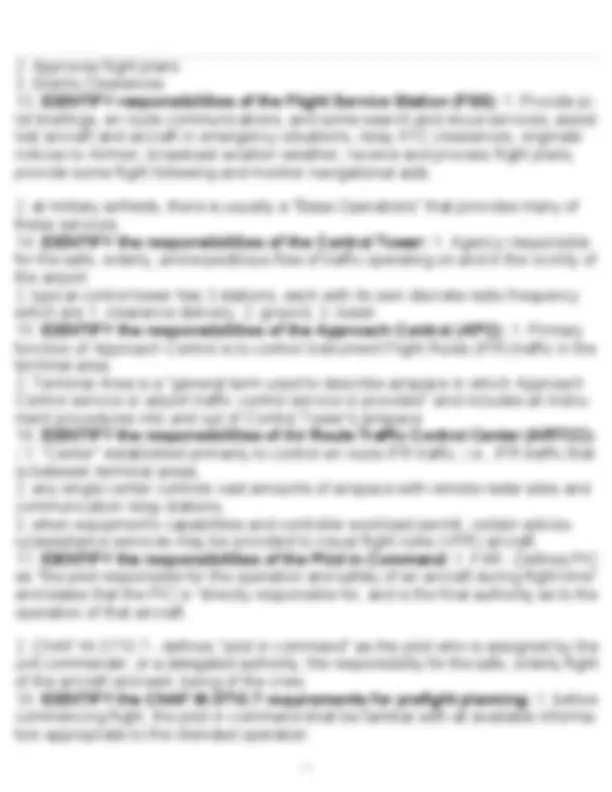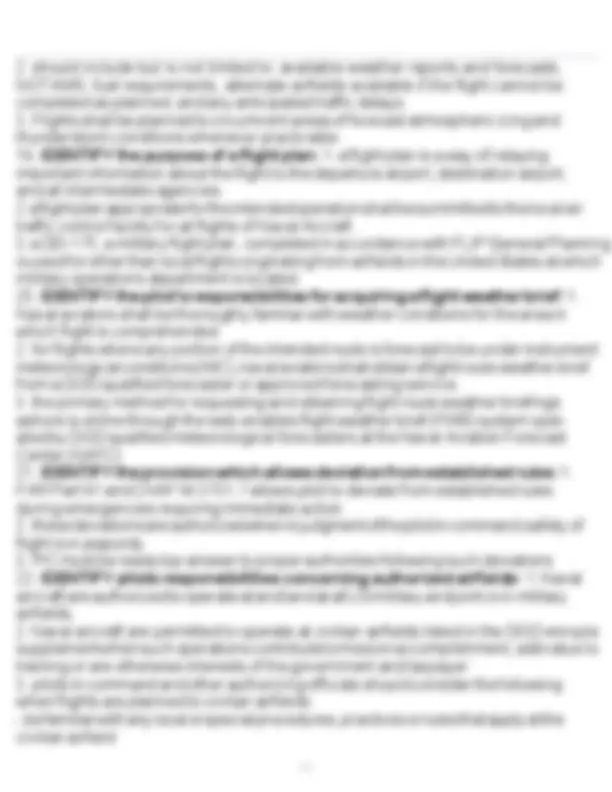1. Organization responsible for the publication of the Federal Aviation Regu-
lations and the Aeronautical Information Manual.: The Federal Aviation Admin-
istration
2. DESCRIBE the relationship between FAR (Federal Aviation Regulations)
Part 91 and the AIM (Aeronautical Information Manual) and the CNAF M-3710.7-
: TEST QUESTION- describe relationship with current knowledge
3. FAR Part 91: the FAR is a regulatory publication which contains the operating
rules and guidelines for domestic aviation,. this applies to all aviators in the United
States, military or civilian. The FAR 91 section most affects naval aviators and is
referred too as, "general Operating and Flight Rules"
4. AIM (Aeronautical Information Manual): A non regulation publication that is a
guide to basic flight information and Air Traffic Control procedures. similiar to the
FAR but the wording is different. information is consistent and is usually easier to
read compared to the FAR.
5. CNAF M-3710.7: -The Chief of Naval Air Force (CNAF) has set forth rules
governing the operations of Naval aircraft throughout the world.
-States that "Naval aircraft shall be operated in accordance with applicable provi-
sions of FAR Par 91 except where this manual prescribes more stringent require-
ments".
-the FAA has permitted naval aircraft to deviate from the FAR part 91 in a few areas
such as low-level missions, special missions, aircraft speed, etc.
6. Flight information publications: DOD publishes these manuals for use by all
branches of the military. FLIP includes en route charts, en route supplements,
instrument approach plates, general planning guides, and area planning guides.
7. LIST the regulatory priority of applicable Department of the Navy (DON),
Department of Defense (DOD), and Federal Aviation Administration (FAA)
publications: priority of publications
1. Specific Airicarft NATOPS Flight Manual
2. CNAF M-3710.7
3. Flight Information Publications (FLIP)
4. Federal Aviation Regulations Part 91
8. IDENTIFY "Shall": means that a procedure is mandatory
9. IDENTIFY "Should": Means that a procedure is recommended
10. IDENTIFY "May" and "Need Not": Means that a procedure is optional














